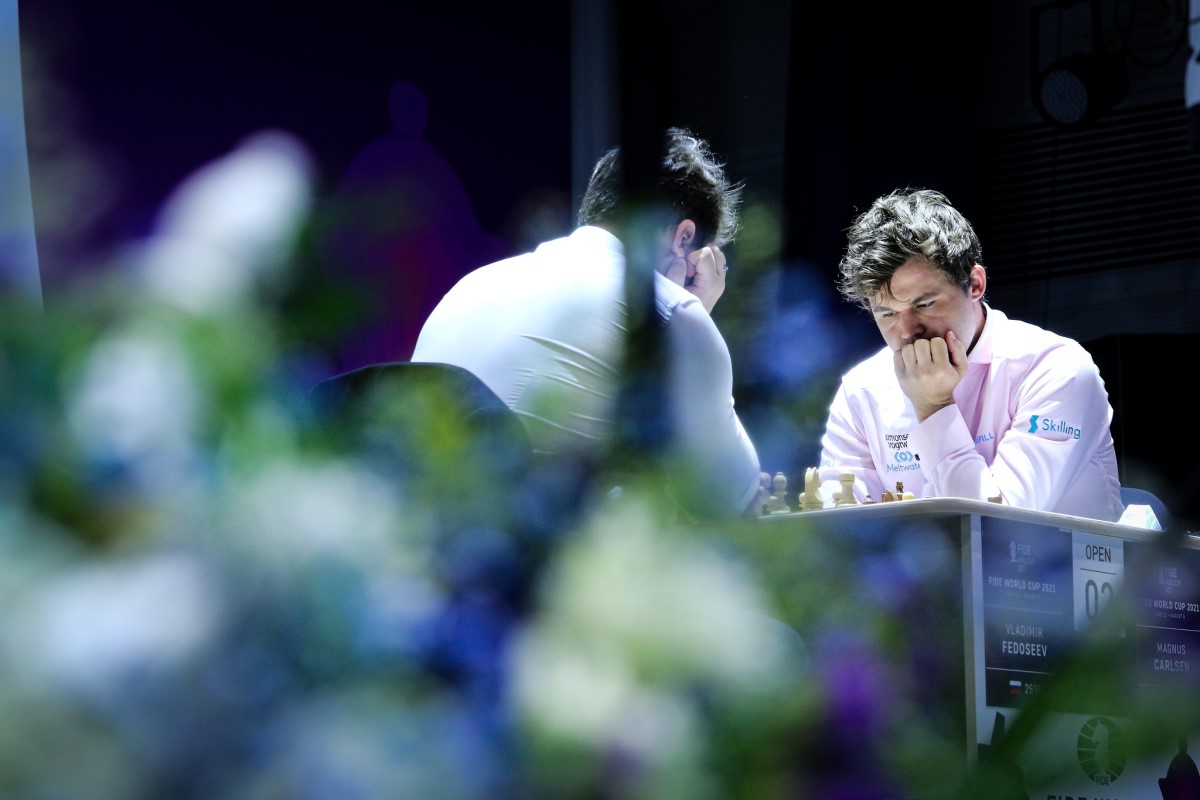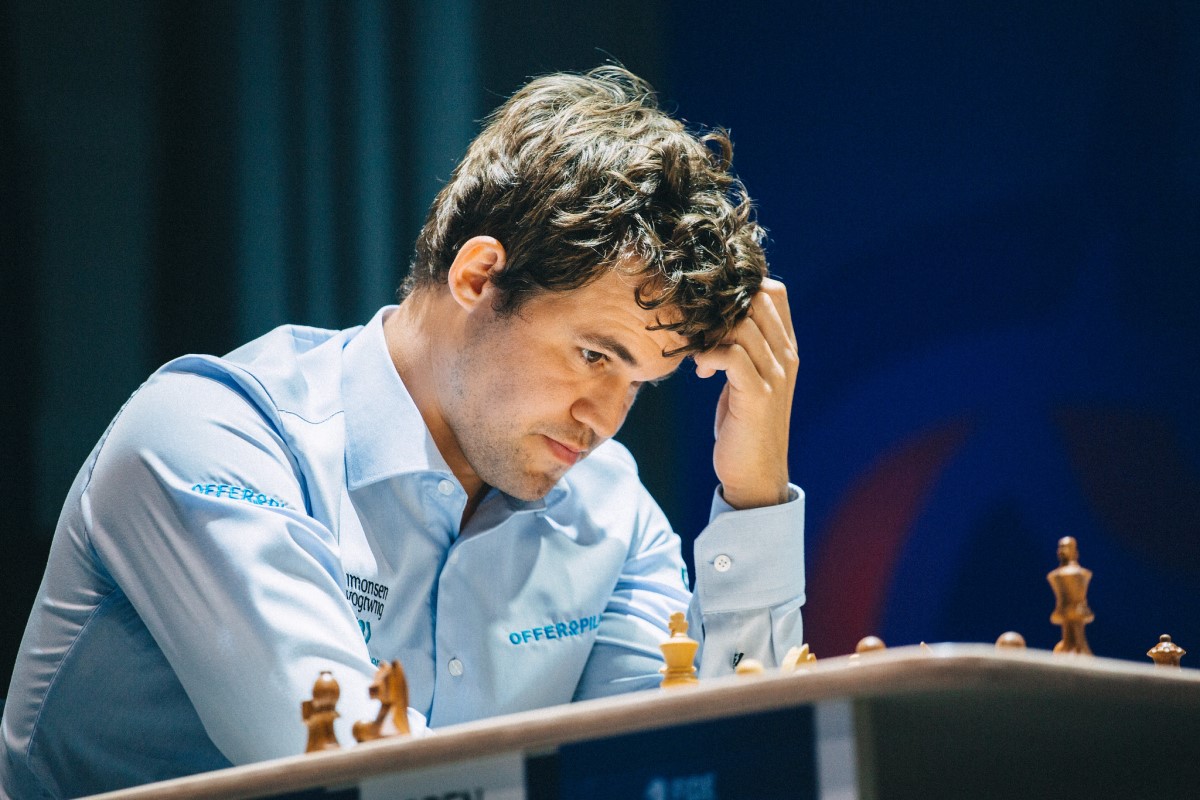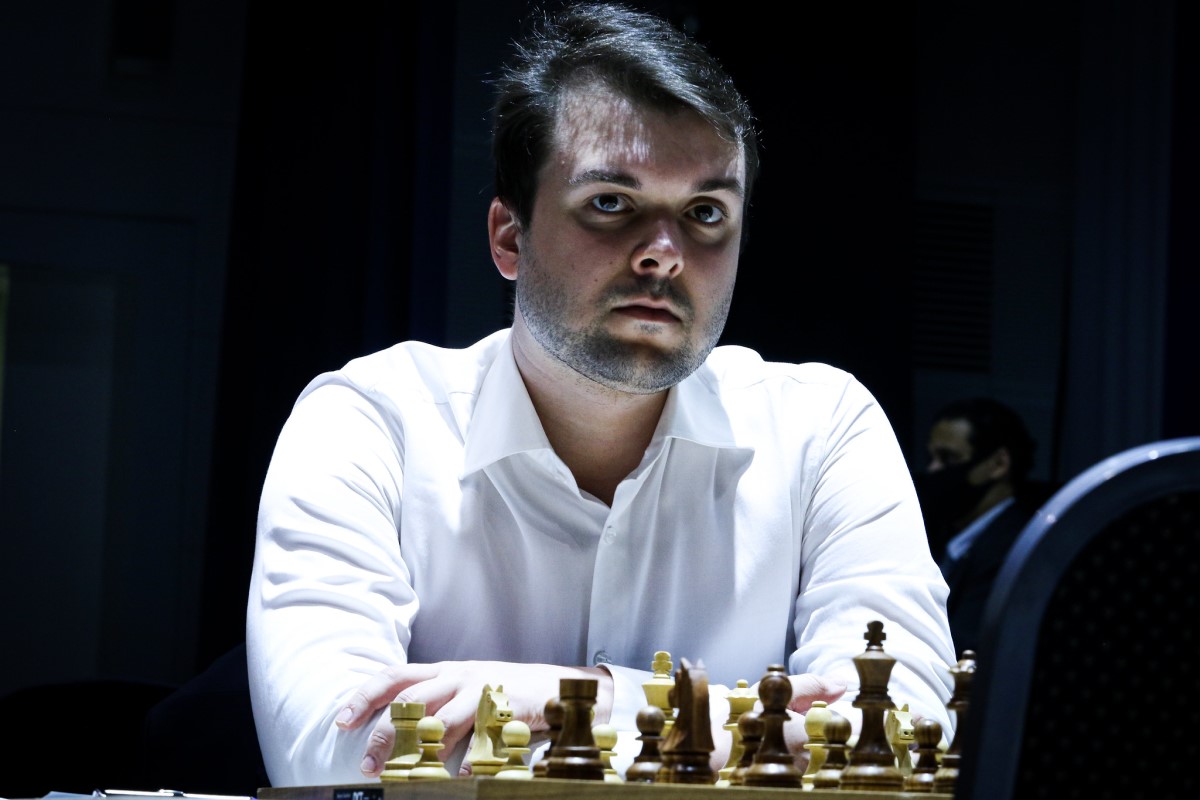


While most of the elite players fight to become the challenger for the World Championship, the reigning champion only waits and prepares for his next match. Some of the past champions decided to keep their cards close to their chests, barely playing classical elite tournaments while waiting for the next match. The reigning champion, on the other hand, cannot keep himself from competing in serious events against his potential opponents.
After losing his semifinal match against Jan-Krzysztof Duda, Magnus Carlen tweeted:
Losing today certainly hurts, but I am nevertheless happy with my progress in the tournament, and also getting great practice for later this year.
This is, in fact, the second time Carlsen plays in the World Cup since he became world champion (in 2017, he was knocked out by Bu Xiangzhi in the third round). Talking to Michael Rahal after his win over Vladimir Fedoseev, Carlsen noted that game 2 of the playoffs against Duda was the first time he was in real trouble at the lengthy tournament, and that he could not adjust properly to the circumstances, failing to save a draw from a defensible position.
The Norwegian is yet to win a World Cup and, given how competitive he has proven to be over the years, we expect him to continue participating in next editions, looking to get one of the few trophies missing in his cabinet — he was certainly close to getting it this year!

Magnus Carlsen during his match against Jan-Krzystof Duda | Photo: Anastasiia Korolkova
On to the game. Carlsen opted for a King’s Indian Defence, to which Fedoseev responded with 3.h4, not fearing to enter a double-edged struggle. The world champion explained that the ensuing setup lent itself to various sacrificial ideas and, on move 16, he went for what will likely turn out to be a handbook example of when to give up an exchange to gain control over a colour complex.
16...f4 17.Bxf4 Bd7 18.Nd1 Rxf4
After 19.Qxf4 Bh6 20.Qg3 Qf8 White needs to untangle his pieces before getting any sort of activity — the bishop is stuck behind the pawn structure, the rook has barely any moves from h1, while the knight on d1 will need a number of precise moves to reach an active square.
Black soon placed his bishop on f4, establishing dark-squared dominance. Carlsen was clearly in the driver’s seat, but he still needed to convert his positional advantage into a win. White’s crucial mistake came on move 27.
White’s position after 27.Qg1 can be described as claustrophobic — engines suggest 27.Kf1, but finding the justification to play such a move over the board is not easy at all. After the text, Carlsen infiltrated with his queen via a8, and slowly but surely tightened the screws around the white king.
Eventually, the world champion accepted to grab the exchange offered repeatedly by Fedoseev, but only under optimal circumstances.
40...Bxg5 41.hxg5 Ne5 and Fedoseev resigned. White had been all but stuck for nearly 20 moves!

Vladimir Fedoseev | Photo: Eteri Kublashvili
Unexpected decisions by both contenders resulted in a 17-move draw in the final. Karjakin surprised Duda by opening with 1.d4, but it was the Russian who ended up bailing out by inviting a three-fold repetition after being surprised by Duda’s 11th move.
White’s 11.Rd1 was the novelty in the game, but apparently Karjakin was not expecting the natural-looking 11...Bd7 by his opponent. After thinking for over 15 minutes, Karjakin entered a line that led to a draw by repetition.
Duda will have the white pieces in Thursday’s rematch. Unlike previous editions of the World Cup, the final match this year consists of 2 classical games — not 4 — which means that another draw will directly lead to a rapid and blitz playoff.
.jpg)
World Cup finalists — Sergey Karjakin and Jan-Krzysztof Duda | Photo: David Llada
| Advertising |